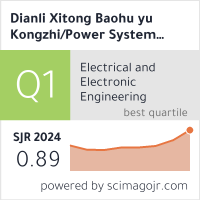ENHANCING ORGANIZATIONAL RESILIENCE: INTEGRATING CYBERSECURITY RISK MANAGEMENT INTO INFORMATION SYSTEMS GOVERNANCE
Keywords:
Cybersecurity Risk Management, Information Systems Governance, Organizational Resilience, Cybersecurity Resilience Framework, Automated Threat Detection, Return on Security Investment (ROSI)Abstract
This article examines the enhancement of organizational resilience through the integration of cybersecurity risk management into Information Systems (IS) governance. Organizations are finding it harder to keep their operations safe as technology grows more important and cyber threats get more complicated. This study employs systems theory to offer a comprehensive framework that integrates business objectives with IT strategy, highlighting the necessity of a robust and flexible cybersecurity posture. The research utilizes an extensive analysis of contemporary cybersecurity literature, established frameworks, and industry practices, providing a pragmatic guidance for enterprises to efficiently mitigate cyber threats. The suggested Cybersecurity Resilience Framework combines governance principles, ongoing monitoring, stakeholder involvement, and human behavior variables to create a complete solution. The findings of this study reveal that firms employing automated detection systems have an average response time of 20 minutes, in contrast to 31 minutes for those utilizing manual detection methods. Additionally, businesses with automated systems had less downtime (4 hours instead of 6 hours) and less of an effect on their finances ($150,000 instead of $250,000). The study also found that companies that followed recognized frameworks like NIST and ISO were better at finding threats (more than 80% of the time) and lost less money (around 20% of the time). The Return on Security Investment (ROSI) analysis showed that companies that made smart investments in cybersecurity saved a lot of money, with ROSI percentages between 28% and 61%. Also, firms showed that they were better at finding and responding to threats, as shown by their Cybersecurity Effectiveness Scores (CES), which showed that they were ready to do business. In general, this framework gives businesses a strong plan for dealing with the ever-changing world of cybersecurity while keeping their operations running.





